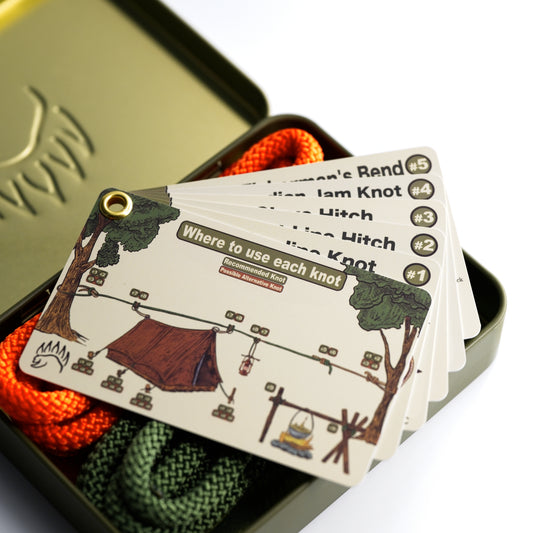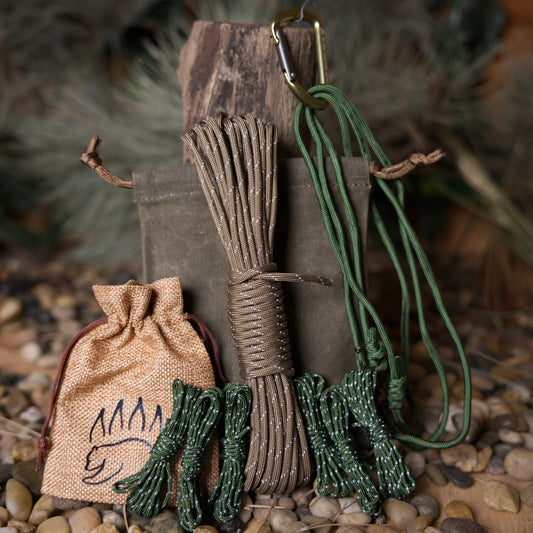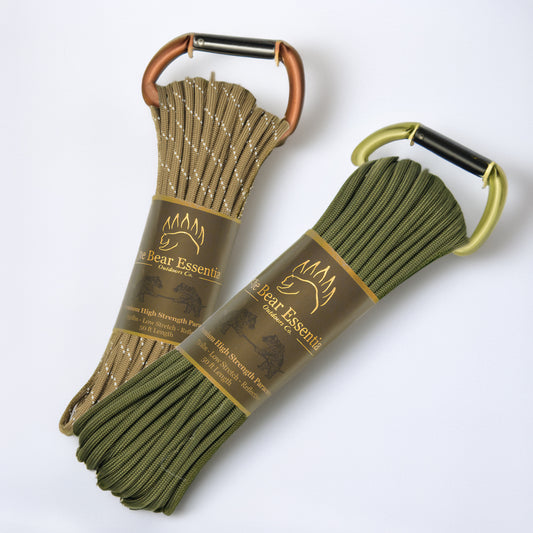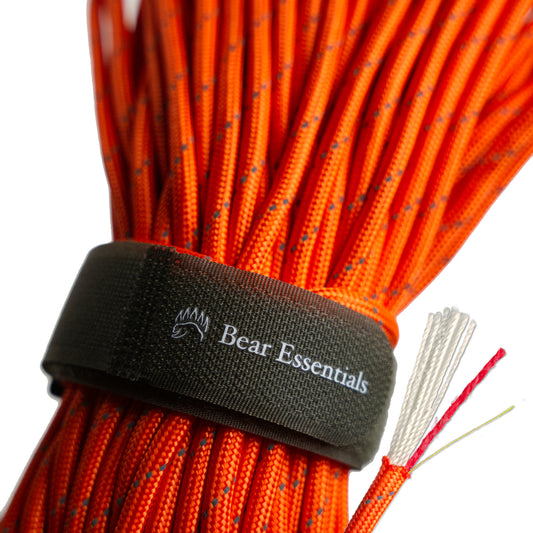How to Tie the Double Sheet Bend
Usage
The Double Sheet Bend is an upgraded version of the classic Sheet Bend, designed for securely joining two ropes, especially of unequal diameters or slippery ropes. Its additional wrap increases surface area, making it just that much more secure. It's reliable for rigging, net-making, or any task requiring a strong connection. This knot is a go-to choice for climbers, boaters, and outdoor enthusiasts.
Why Learn the Double Sheet Bend?
The Double Sheet Bend offers enhanced security compared to the standard Sheet Bend. It is particularly useful for tying slippery or stiff ropes, making it a vital knot for anyone working with ropes in challenging conditions.
Common Uses
-
Climbing and Mountaineering:
- Securing ropes of different diameters for temporary anchors.
-
Boating and Marine Applications:
- Joining wet or slippery ropes in mooring or towing.
-
Camping and Outdoor Projects:
- Tying ropes for hammocks, shelters, or net-making.
ABOK Number
(Ashley Book of Knots)
Other Names
TypeJoining Knot
|
Notable Features
- Secure Connection: Ideal for ropes of unequal sizes or stiffness.
- Non-Jamming: Remains easy to untie after use.
- Versatile: Useful for a variety of applications, from utility work to crafts.
Variations
(No variations mentioned; section left blank.)
Similar Knots
Sheet Bend vs. Double Sheet Bend
- Pros: Simpler and faster to tie.
- Cons: Less secure, especially with slippery or stiff ropes.
Carrick Bend vs. Double Sheet Bend
- Pros: Stronger for load-bearing tasks.
- Cons: Bulkier and more complex to tie.
Fisherman’s Knot vs. Double Sheet Bend
- Pros: Compact and ideal for permanent connections.
- Cons: Harder to untie after heavy loads.
History
The Double Sheet Bend, similar to the Weaver’s Knot, has been used for centuries in sailing and fishing. It was originally employed to secure sails to ropes, thanks to its ability to handle ropes of varying sizes and conditions. Its enhanced design ensures strength and reliability, making it a preferred knot for demanding applications.
Security Level
The Double Sheet Bend is highly secure for joining ropes of different diameters or materials. Its double wrap provides extra grip, reducing the likelihood of slippage even under load.
Downsides
- More Complex: Slightly more complex to tie than the standard Sheet Bend.
- Potential Loosening: Can loosen if not tied properly.
Structure
- Form a bight in the larger rope.
- Pass the smaller rope through the bight, ensuring the standing end is on the same side as the larger rope’s standing end.
- Wrap the smaller rope around the bight and tuck it under itself to form a basic Sheet Bend.
- Add an additional wrap around the bight, passing the smaller rope back under itself again.
- Tighten the knot by pulling both ends until secure.
Pro Tip: Always ensure both tails are on the same side of the knot to prevent slipping.
FAQ
What is the Double Sheet Bend used for?
It is used to securely join two ropes, particularly of unequal diameter or stiffness.
Is the Double Sheet Bend easy to untie?
Yes, it is non-jamming and can be untied easily after use.
How does it compare to the Sheet Bend?
The Double Sheet Bend provides more security, especially for slippery or stiff ropes.
Can it handle wet ropes?
Yes, the Double Sheet Bend is highly effective for joining wet or slippery ropes.
Important Notes on Safety
The Double Sheet Bend is a reliable choice for joining ropes but should be tied carefully to ensure the tails are on the same side for maximum security. Avoid using it for dynamic or load-bearing tasks without additional support.









